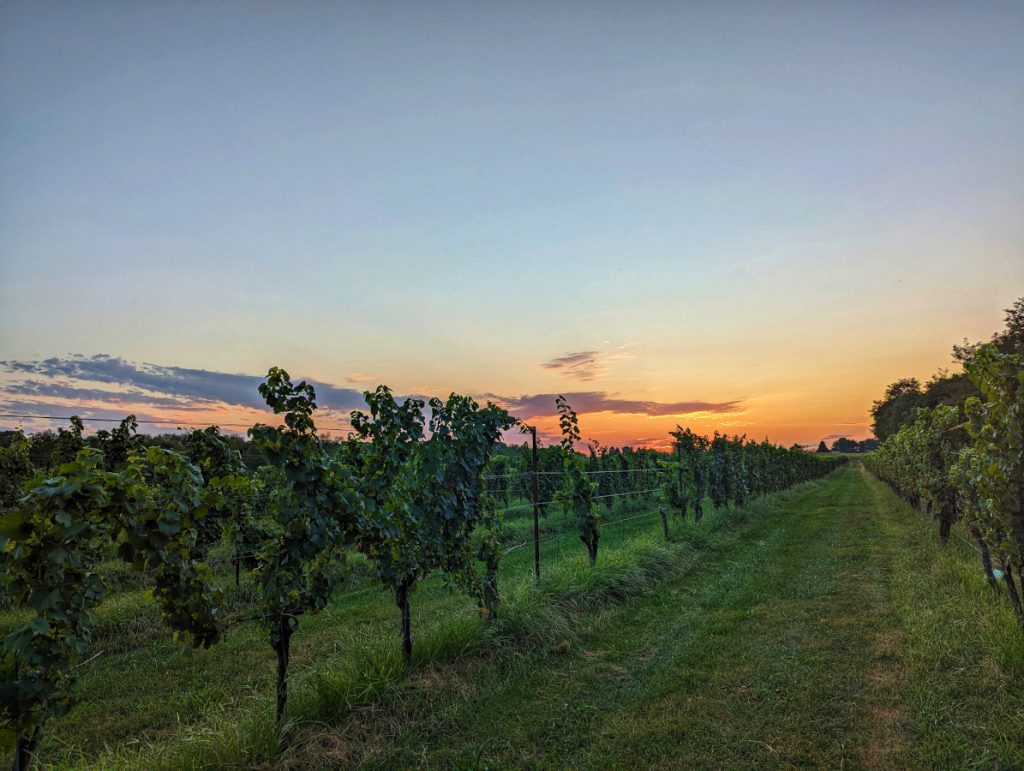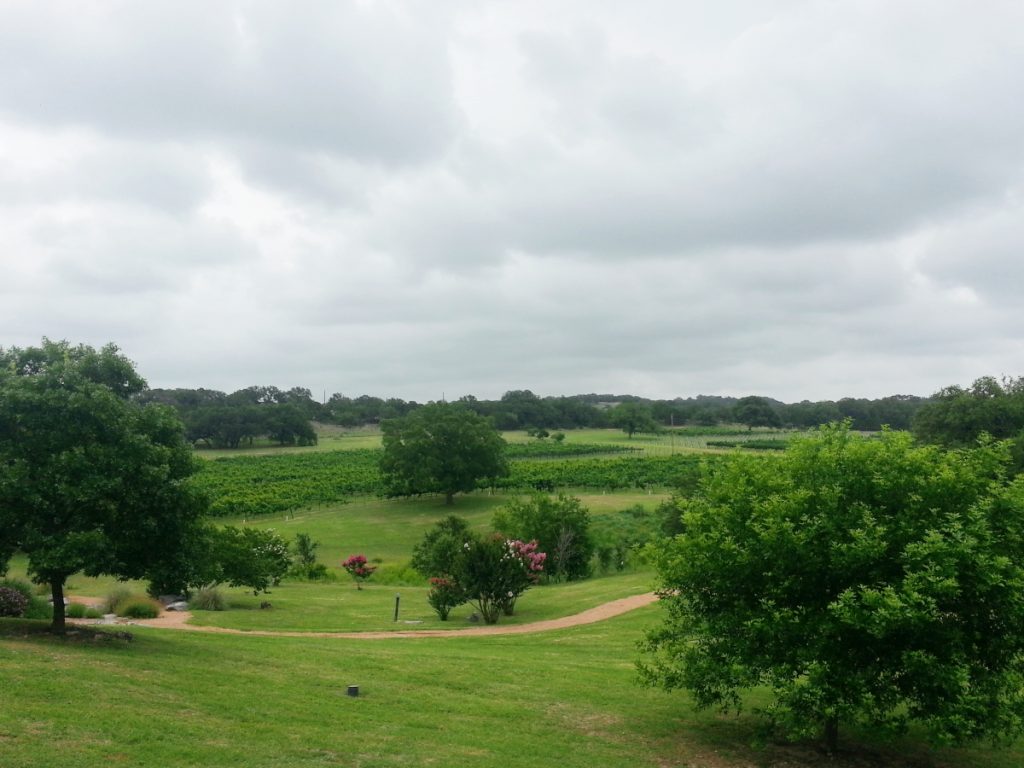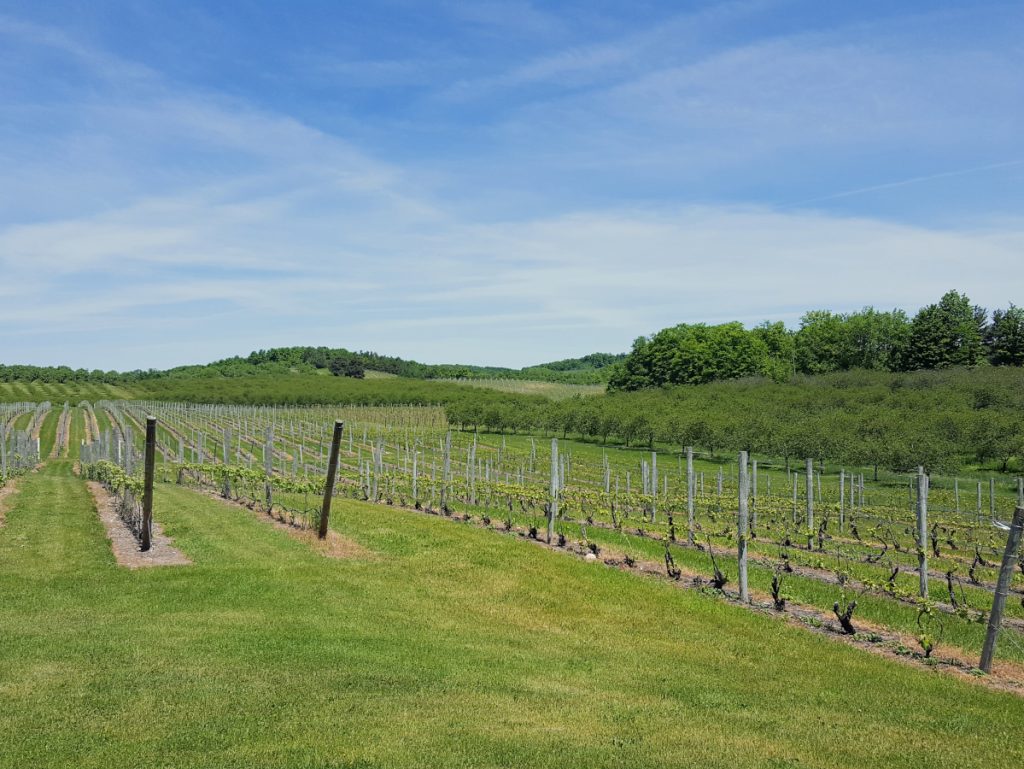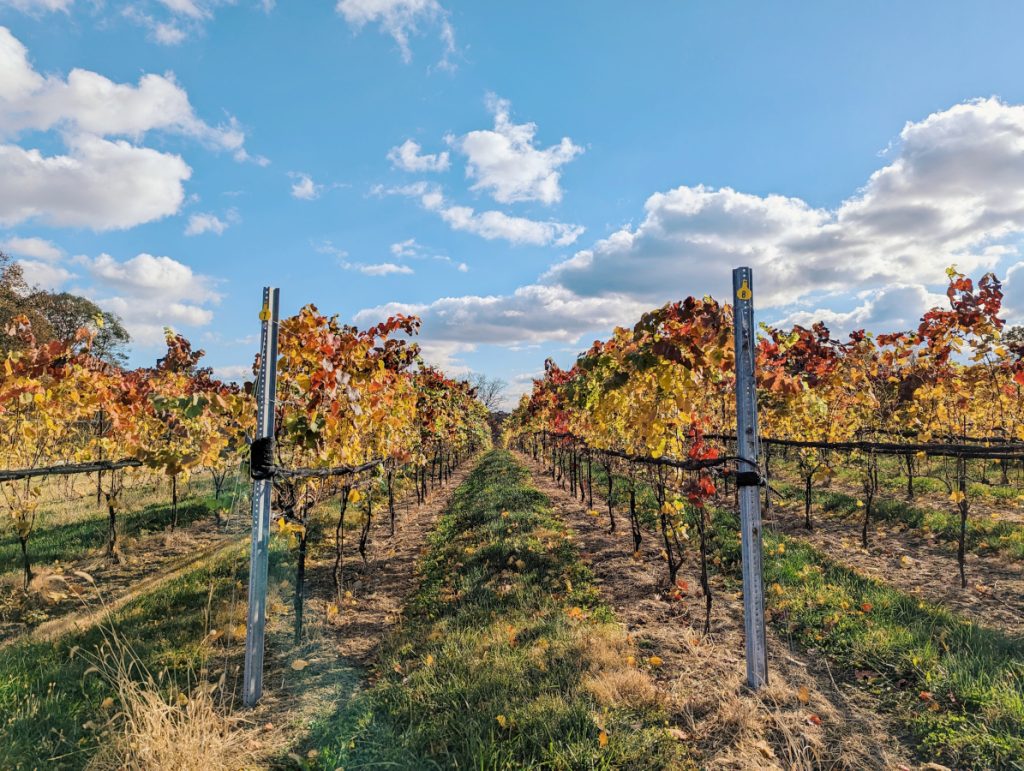The Wine Regions No One Talks About…

Photo by: Savannah Smith Photography
Do you know what to expect from your regional or local wineries in terms of wine quality?
If you’re like the average American, the answer is probably “no.”
Most of our wine quality perspectives and expectations come from what we taste coming out of California or the Western U.S. states that dominate the national markets. However, many wines that come from these regions have a very distinct flavor and aroma profile when compared to other grape growing regions across the U.S.
Where Grapes are Grown Influences the Wine’s Flavor
Wines are typically regionally distinct. This means that the region in which it is grown influences the fruit’s ripeness. Fruit ripeness, in turn, influences the aroma, flavor, and taste of a wine. Everything from the daily weather to the soil structure can affect how wine grapes ripen, and, hence, how the wines taste. This is known as terroir.

Photo by: Savannah Smith Photography
Many wine experts can argue that even individual vineyards can produce distinctly unique wines.
However, I’d like to zoom out a bit from vineyard typicity and talk more about some of the states that are less covered by the popular wine media.
A large part of the wine vintage information focuses on California, Washington, and Oregon’s wine industries. There are many distinct and separate wine grape growing regions within each state, and are known as American Viticultural Areas or AVAs. However, if we take a broader approach and generalize on the flavor and taste profile of Western U.S. wines, wines tend to be fruity, concentrated with aroma and flavor, low in acid (not too sour), rich in flavor, and higher in alcohol compared to many other grape growing regions throughout the country. This is due to the fact that most of the growing regions in the Western U.S. are warm and relatively dry, which allows for adequate-to-advanced grape ripening in sugar, seed tannin, and flavor. These components contribute to alcohol, mouthfeel, and wine flavor, respectively. In fact, when we talk about “New World” wine characters, we are often referring to the tastes profiles of wines that are common in these areas.
But What About the Rest of the U.S.?
Did you know that there are wineries in each of the 50 United States?
There are!
But, again, most of what we see on wine shelves comes from the three primary producing states in the U.S.
Nonetheless, each state has their own unique wine industry.
For those states that also grow their own wine grapes, the climate and weather conditions, as well as the details surrounding soil structure and vineyard maintenance, influence how the wines taste. In general, as the weather becomes cooler overall, the wines become more sour. Additionally, for regions with higher percentages of rainfall, the flavor profile will change on the flavor spectrum, often leaning more towards the “Old World” profile.
These are, again, generalities. But it does provide a brief explanation for why a Chardonnay grown and produced in California tastes differently than a Chardonnay grown and produced in Colorado, for example.
One of the best things I get to do in my consulting job is work with wineries all over the U.S. Thus, I’d like to share some of my observations of the 2023 vintage (the 2023 growing season for the wine grapes) and what to expect from the wines from a few lesser known states!
Let’s dive in…

Photo by: Denise M. Gardner
The Northeast (PA, NJ)
For most of 2023, the weather in the Northeast was somewhat old-school “average.” A late season Spring frost hit many regions, lowering yields for early budding varieties, which was the primary concern going into harvest season. By late September tropical storms and hurricanes became a bigger concern. Tropical Storm Ophelia was actually a fairly impactful weather event as it hit in late September. For most of the Northeast, late September is prime harvest season for several grape varieties. By the time Ophelia was on the horizon, it became clear that many growers and wineries were making decisions to pick whites before the rain hit. This decision is often related to prioritizing the sugar concentration and flavor of the wine grapes while minimizing the potential for disease or rot.
Obviously, the farther inland a vineyard was located from the Eastern Seaboard, the less impacted by Ophelia. However, one common trend I saw amongst many of these regions was later picking of red wine grape varieties in which sugars stopped accumulating. Thus, many wineries allocated red wines with less overall sugar to their rosé programs. Because the red grapes were getting picked in mid- to late-October, the colors and flavors were quite ripe, which is unusual for rosé winemaking.
What to expect from the wines:
Many of the whites were chaptalized, as they were picked early to avoid rot after Ophelia came through the region. Again, this is generalizing for the regions most impacted by Tropical Storm Ophelia (some regions within the Northeast did not experience this weather phenomenon).
Thus, I expect many of the whites to have noticeable acidity (sourness) making them refreshing. Overall flavor intensity may be less intense, or lean towards the citrus-flavor profile, as picking decisions were based on weather logistics for many varieties. And finally, expect normal to lower alcohols depending on whether or not a winemaker chaptalized (added sugar) prior to fermentation.
In comparison, many of the rosés I’ve been tasting from the 2023 season, especially coming out of New Jersey, are really ripe and fruity rosé wines because the grapes were picked so late in the growing season. This later picking time gave ample opportunity for flavor ripeness, as flavor is one of the last things to “set” prior to when grapes are picked. Many of these rosé wines were dark in color intensity at the onset of fermentation. However, I’ve also noticed adequate color dropping, which is normal for rosé wines, and many rosé wines are now a normal color intensity with nice, varying pink hues.
Red wines are still somewhat a question mark for the 2023 vintage. Again, some regions, especially those in parts of Virginia and central Pennsylvania, experienced normal ripening longevity for their reds. But overall, I noticed lower sugar concentrations and higher acid concentrations for many wines that got made in 2023. Again, sugar is easily altered and I would expect average, normal alcohol concentrations for red wines. Acid may or may not have been manipulated depending on the producer. And flavor is likely going to fall in the middle of the aroma/flavor spectrum for ripeness. This means that reds are likely not going to be as concentrated as they could be, and will tend to carry more complex aromas/flavors for this vintage.
The Southeast (GA)
In the Southeastern part of the country, the big commonality I saw was really high acids. I attribute this to picking pressure as a result of rainy, cloudy weather during the 2023 season. Many picking decisions were based on rot pressure or frequency in large rainstorms. Both of these scenarios cuts the ripening period for grapes short, which allows for a higher probability of acid retention. For whites and rosés, this isn’t a big deal. The acid retention makes them refreshing. For dry red wines, the acid retention may turn off some red wine drinkers.
What to expect from the wines:
The overall trend I taste in these wines is retention of acidity. That means it’s possible these wines will taste a bit more sour compared to previous vintages. While winemakers can alter the acidity a little bit in the cellar, the degree to which the acid can be decreased is limited. Look for whites with strong fruity aromatics, as the growing season should have produced some refreshing white wines. And this would also be the year for good, crisp, and aromatic rosés.

Photo by: Denise M. Gardner
The South (TX)
The Texas wine industry is split into multiple regions, and climatically, these regions can vary. For some regions in Texas, the harvest season was extremely hot and dry as many parts of the state endured record high daytime and nighttime temperatures. The extreme high temperatures can cause issues for grape berry ripening, and thus, to accommodate the high temperatures, many growers picked grapes earlier than usual for most varieties. In some parts of Texas, the majority of the harvest was completed by the end of August. For others, the growing season was relatively average, with regular periods of rainfall, but adequate ripening periods. The High Plains region, specifically, ended their harvest season on a late freeze. Once a freeze hits a vineyard in the Fall, the vine shuts down for the dormant season and the grapes stop ripening.
What to expect from the wines:
True to many drier growing regions, the alcohols are likely going to be high for many wines due to the high incoming sugars within the grapes. The extreme heat could have altered the normal wine styles for some of these wines. Expect reds to be lighter in color, some wines may have retained acidity (i.e., taste more sour), and the flavor profiles may be slightly altered compared to previous vintages.

Photo by: Denise M. Gardner
The Midwest (CO, MI, NE, OH)
Again, this region is vast and what may be true for one state/region may not be true for others. These are large generalities. Parts of the Midwest suffered from late Spring frosts or cold snaps, which reduced grape yields. From a winery perspective, this can limit availability of certain wines due to a decrease in available grapes. For some varieties, it’s possible 90%+ may have been lost for the 2023 vintage.
In Colorado, the Spring temperatures remained cool, which delayed bud break. Ultimately, this shortens the growing season and can affect ripening conditions of the grapes. However, the month of July ended up being one of the hottest on record, which accelerated ripening and made harvest periods a bit more normal for most of the state. A late Fall frost in October closed the growing season.
Additionally, some parts of the Midwest experienced limited rainfall or droughts during the growing season. While grapes are not a water-heavy crop, the availability of water is still essential to vine growth and grape development. Unfortunately, for many of these regions, irrigation is not common.
Once exception to this region was the state of Michigan in which most of the state had a wonderful growing season. Limited disease pressure with adequate ripening through the Summer and Fall months should deliver high quality wines from Michigan in 2023.
What to expect from the wines:
For those regions that suffered from late Spring frosts, it’s possible you may not find some of your favorite wine varieties produced from the 2023 vintage. The degree of the loss will vary from vineyard to vineyard, and hence, winery to winery, but it’s possible you may see some holes in their wine portfolio if grapes were hit hard from the frost.
With yields and availability aside, most wines from these states should be in relatively good condition. A wine grape report from Ohio indicated that this was the growing season for white wines and rosés, so I would expect high quality from those styles of wine from the 2023 vintage. Due to the shorter growing season, reds may not reach that jammy-fruity ripeness that many consumers love. To some degree, I expect the reds from Ohio to lean more into the “Old World” style of red wine. If you love red wines from France and Italy, this may be the year to try some of the reds from states like Ohio and Colorado.
While Colorado’s season was somewhat shortened, wines seemed to retain good acidity and reach adequate (if not, above adequate) sugar levels. This means that many of the wines may have the higher alcohol (>12% ABV) that many come to expect from the region. With the mid-summer accelerated ripening stage, I would also expect nice aromas and flavors from these wines.
Wines from Nebraska tend to show higher acidity levels compared to what many American consumers associate with national wine brands. Thus, these wines often appear sour. For whites and rosés, this is to their benefit! We love refreshing white and rosé wines. Plus, I expect relatively good varietal character from many of these varieties. So far, I’ve been tasting a few Marquettes from the 2023 vintage, and while the acidity is elevated (again, compared to many “New World” style of reds), the flavor profile and ripeness is right on point for the Marquette variety.
And finally, Michigan! With such a great growing season, the expectation from these wines is this: 2023 is the year to buy Michigan wines.

Photo by: Denise M. Gardner
While tasting wines from California, Oregon, and Washington is nothing short of an enjoyable experience, exploring wine grape regions outside of these states can be a lot of fun! It can truly connect you with your home state, as most wineries and vineyards are closely aligned with the weather and how it affects wine quality for them. Many have seasonal stories to share and can enlighten you with the local flavor.
2024 could be the year to put some of your wine biases aside and sip on something new!
Additional Resources
This edition of the Sip & Swirl was created using information obtained from DG Winemaking clients, social media observations, as well as the following resources:
“2023 Year in Review Growing Season East of the Rocky Mountains” by Linda Jones McKee. Wine Business Monthly, December 2023. Pg. 32 – 41.
“Vintage 2023: A Cup (Wineglass) Half-Full?” by Dr. Paul Reed and Stephen J. Gamet. Nebraska VineLines, March 2023. Available at: https://viticulture.unl.edu/vinelines/2023/MarchVineLines2023.pdf
Colorado Semi-Annual Report: January 1, 2023 – December 31, 2023. By Horst Caspari, Claudie Bertin, Grace Gardner, Peter Bennett Goble, and Russ Schumacher. Available at: https://coloradowine.com/wp-content/uploads/2024/02/Semi-annual-report-Viticulture-Research-Jul-to-Dec-2023.pdf

